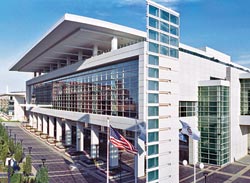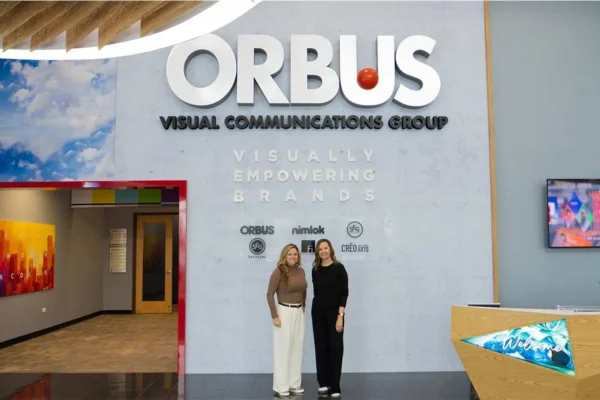
It has been an intense month in Chicago. After the city lost several major shows, government officials took the matters into their own hands and introduced a series of changes that are shaking up the tradeshow industry and the way it does business.
Here is the timeline. On Jan. 11, Illinois Governor Pat Quinn, Chicago Mayor Richard M. Daley and the Metropolitan Pier and Exposition Authority (MPEA) announced plans to introduce legislation that would reform labor rules and contractor practices at McCormick Place. Proposed changes would make McCormick Place workers public employees, prohibited from striking, and reduce the number of bargaining units from five to three, making it easier for exhibitors to navigate the jurisdiction maze and give the authority, known as McPier, a clean slate to negotiate show labor agreements. In exchange, the organization’s debt would be restructured.
“Convention business in Chicago is at a crossroads,” said John Gates, chairman of MPEA in a release. “The many stakeholders in Chicago’s vitally important convention industry must do what it takes to stay competitive and provide better value to customers. The choice is clear. We can do what it takes, pass this legislation to modernize our business model, create new jobs and growth…or we can continue to operate at a competitive disadvantage and watch the steady decline of one of our state’s most important economic resources.”
On Jan. 15, the labor unions proposed an Exhibitors’ Bill of Rights, which calls for transparency from the general contractors and show organizers to ensure that savings are being passed to exhibitors.
After the approval by the Illinois General Assembly, Quinn signed legislation on Feb. 17 that replaces the MPEA’s 13-member board with a seven-member interim board to examine how to retool operations. The governor and Chicago mayor have 30 days to appoint members. The legislation is not expected to be voted on until May, according to MPEA.
On Feb. 18, the Chicago Convention and Tourism Bureau organized a closed-door meeting between the facility and a select group of organizers, union officials and contractors who voiced a strong opposition to the proposed bill. Instead of granting the authority exclusive control over the labor unions, they proposed non-legislative steps to cut exhibitors costs for in-house electrical services, exhibit installation and dismantle (I&D) and food services. Representatives of exhibitors were not invited.
“Exclusivity inherently destroys market dynamics and always leads to increased costs and diminished service over time,” said a released statement by the Exhibition Services and Contractors (ESCA) in a position paper. “Exclusive services are bad for the customer, both the exhibition organizers and exhibitors.”
When it comes to the issues at the bottom of the general debate, there are multiple forces at work, but it seems to come down to changing the business model and the degree to which the stakeholders are willing to do it.
One of the obvious red flags has been the cost of material handling services, which by many is perceived as inflated. General service contractors state that the cost of drayage also covers other costs such as the infrastructure, but the debate has been going on in fits and spurts for more than a decade. Most recently, on Feb. 11, Chicago’s CBS affiliate reported on a case where a shipment that cost $4,000 to transport from Shanghai to Chicago cost $17,000 to deliver from the loading dock to the booth. In 1998, exclusive services, such as electrical, were at the center of legislation debate, and around the same time, Association Meetings magazine reported the American Academy of Family Physicians paid $25,000 for a union worker to push the button to play a video. A newer issue also currently impacting the exhibitor costs and contributing to the problem is the revenue-sharing model between organizers and general contractors, according to industry sources.
So, what is actually proposed in the bill? The legislation would establish MPEA as a public employer under the Illinois Public Labor Relations Act (IPLRA). This would allow MPEA to negotiate contracts with all show labor, including workers employed by contractors, as well as prohibit strikes and provide MPEA with the authority to audit all contracts and agreements.
Currently there are five unions representing the workers at the venue. Under the bill, the number of bargaining agreements would be reduced to three. They would include a move-in/move-out unit, which includes employees that handle dock work, moving all freight and machinery, booth work related to machinery; an assembly/disassembly unit, which includes workers for crating, assembly, flooring, carpeting, draping, skirting and signage; and the IBEW Local 134 electricians unit. There also are possible changes in terms of introducing flexible start times and reducing minimum labor costs.
Much remains to be ironed out, and the tradeshow blogosphere is full of unanswered questions. Will the general contractors remain in charge of selecting labor and payroll? How will the payroll for labor be handled? Will the installation and dismantle contractors be able to call their people by name? If the tradeshow workers become state employees, will they be able to work at other venues?
The Exhibition Services and Contractors Association (ESCA), the International Association of Exhibitions and Events (IAEE) and contractors Freeman and GES have all expressed public concerns with the legislation.
While there is plenty of difference of opinion about the proposed bill, as well as the best solutions to handle the situation, the consensus seems to be that the business model is bound to change irrevocably. And recession-hit exhibitors get to be the driving force.
“What’s needed is a complete overhaul of the cost structure and billing process,” said Margit Weisgal, president of Trade Show Exhibitors Association (TSEA), in an interview with CBS2. She pointed to Europe where the system is more transparent.
“This is what the space is going to cost you and this is what’s included, and you know up front what you are going to pay,” agreed Bernie Massett, director of national install and dismantle services for MC2. “Drayage fee needs to be a finite and not a variable cost.
Maybe it should be included in the per-square-foot price, up to a certain weight, and exhibitors should know the price upfront. These are exclusive services, and exhibitors can’t negotiate the rates. If this was I&D labor, they could switch companies to stay within budget.”
Jim Wurm, executive director of the Exhibitor Appointed Contractor Association (EACA), pointed out the current situations are likely to affect every aspect of the industry.
“No one is immune,” he said. “Everyone is going to have some piece of this change and be willing to do their part to make it work.”
While “transparency” seems to the word of the day, there were no Twitter feeds coming from the closed-door meetings at McCormick Place as of press time. Some of the most heated real-time discussions are happening at http://blog.exhibitindustrycouncil.org and at IAEE and Exhibit Designers and Producers Association groups on www.linkedin.com.
For additional commentary on these developments in the tradeshow industry in Chicago, please see David Cizmar’s column: Civil War or self destruction in Chicago.






















